Authors:
ABSTRACT
Aim
This was to evaluate the CEJ-ABC distance in sound and unsound deciduous teeth, according to subject's
age and the presence of caries.
Methods
Study Design: cross-sectional study. The study sample
comprised 334 radiographs, the teeth were divided in two groups, according to the interproximal surface characteristics. The
distal surface of the mandibular first deciduous molar and/or the mesial surface of the second mandibular deciduous molar
were analysed.
Results
The average for the CEJ-ABC distance in the distal surface of the mandibular first molar was
different between sound and carious teeth. The same behaviour was observed in the mesial surface of the mandibular second
molar. Both the presence of lesion on the interproximal surface and the subject age exherted influence over the mean CEJ-
ABC distance. No interaction between these factors was statistically observed. Statistics: data were analyzed with SPSS. Two-
way ANOVA was used to assess the distance of CEJ-ABC considering the interproximal surface status and age.
Conclusion
Although the observation that both the interproximal surface status and the age had influence on the CEJ-
ABC distance values, in the present study the interaction between these variables was not a determinant for the increase CEJ-
ABC distances.
PLUMX METRICS
Publication date:
Keywords:
Issue:
Vol.13 – n.1/2012
Page:
Publisher:
Cite:
Harvard: S. N. Tarmahomed Sall, M. Boessio Vizzotto, H. E. Dias Silveira, C. Kuchenbecker Rsing, C. Moreira Pitoni, F. Borba de Araujo (2012) "Alveolar bone height in primary dentition a radiographic evaluation related to caries lesions", European Journal of Paediatric Dentistry, 13(1), pp69-72. doi:
Copyright (c) 2021 Ariesdue

This work is licensed under a Creative Commons Attribution-NonCommercial 4.0 International License.
